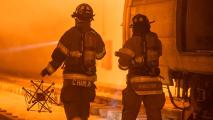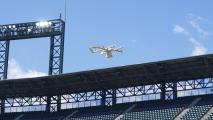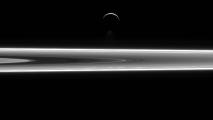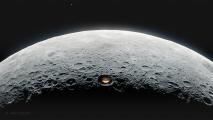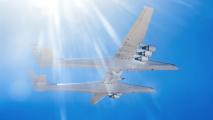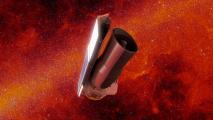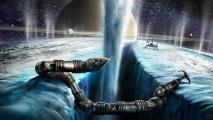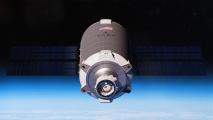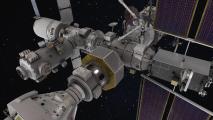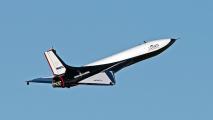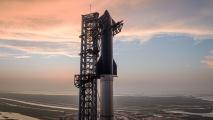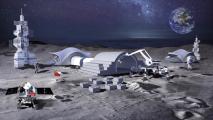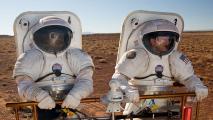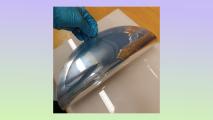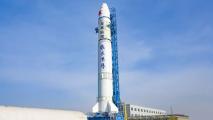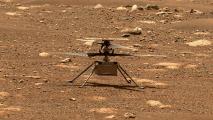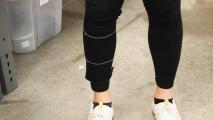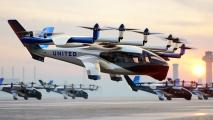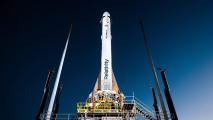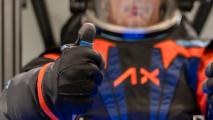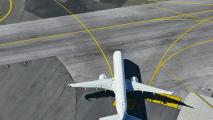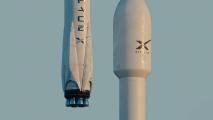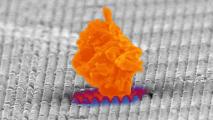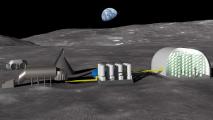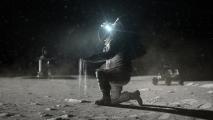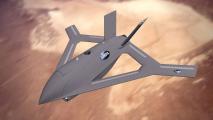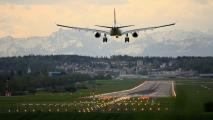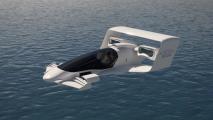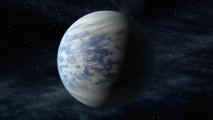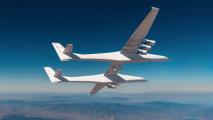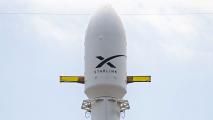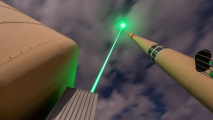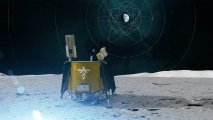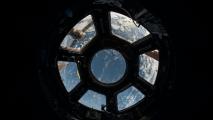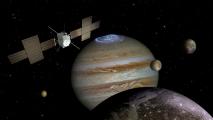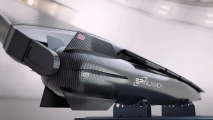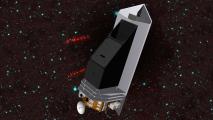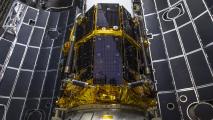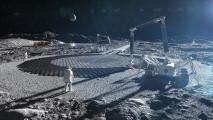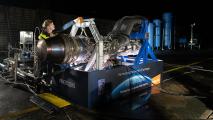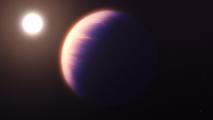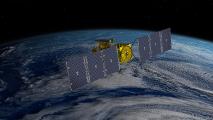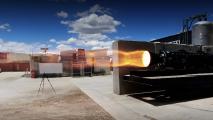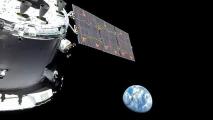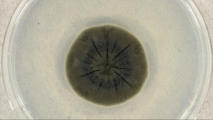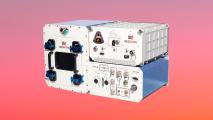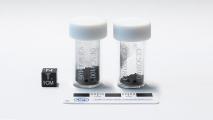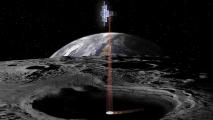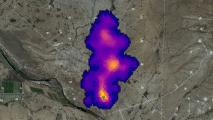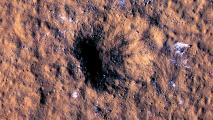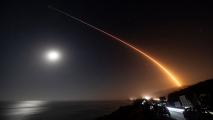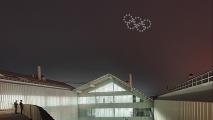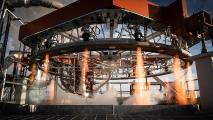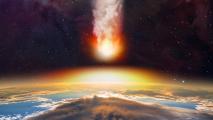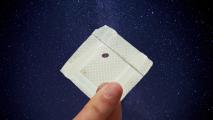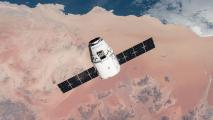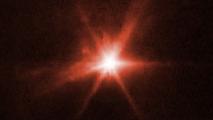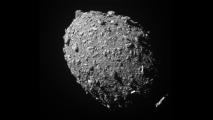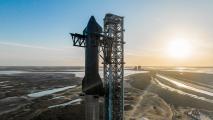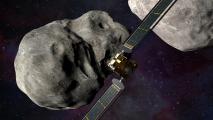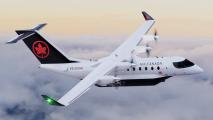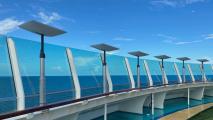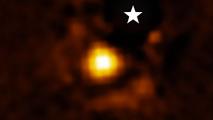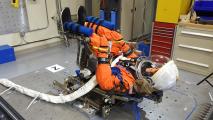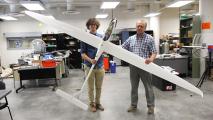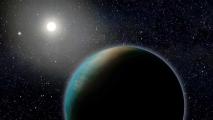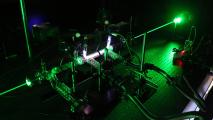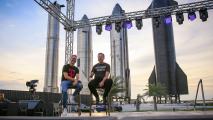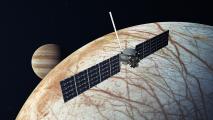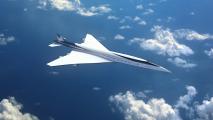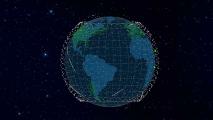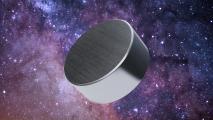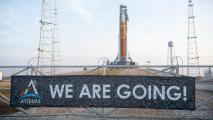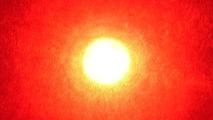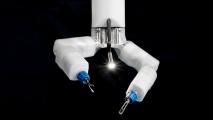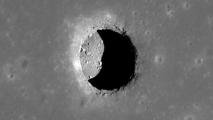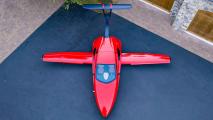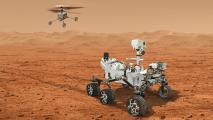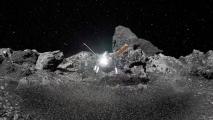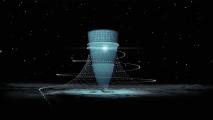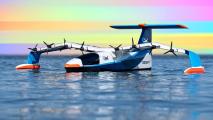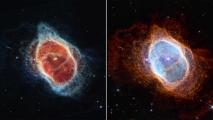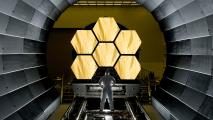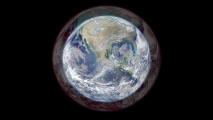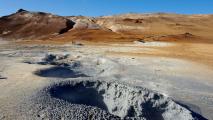Field: Aerospace
Visiting space likely won’t cause permanent brain damage, says NASA study
Spending months in space has a major impact on astronauts’ brains, but three years back on Earth appears to reverse the change.
Sound waves can trigger torpor-like state in mice and rats
Ultrasound stimulation triggers a torpor-like state in animals, suggesting a noninvasive way to put people into the state.
Shape-shifting space robots help firefighters on Earth
The designer of a new type of rover for NASA has found a way to make her space robots useful to firefighters on Earth.
Watch this autonomous drone deliver beer and peanuts in a baseball stadium
Guests at the opening of an autonomous systems conference witnessed a drone delivery at Denver's Coors Field.
NASA spots an enormous water plume erupting on Saturn’s ocean moon
Using the James Webb Space Telescope, researchers are gaining new insights into Enceladus, which holds a sea beneath its icy surface.
A massive moon telescope could solve the mystery of the “Cosmic Dark Ages”
NASA hopes a massive radio telescope on the moon will be able to reveal what was happening during the mysterious “Cosmic Dark Ages."
Watch the world’s largest plane drop a hypersonic aircraft
Aerospace company Stratolaunch has dropped a hypersonic aircraft from its record-breaking Roc launch platform for the first time.
NASA’s last “Great Observatory” could be coming out of retirement
A startup’s audacious plan to revive NASA’s retired Spitzer Space Telescope just secured a $250,000 Space Force contract.
Watch NASA’s one-of-a-kind snake robot training to go to space
NASA has released a video of its one-of-a-kind snake robot EELS slithering across a variety of challenging terrains.
SpaceX to launch first commercial space station in 2025
The world’s first commercial space station could reach orbit as soon as 2025 as part of a deal between SpaceX and space startup Vast.
NASA’s next space station will be 1,000 times farther from Earth
While NASA prepares to launch its lunar space station, other groups are working to ensure we still have an off-world home closer to Earth.
Watch a rocket-powered spaceplane fly for the first time
After flying for the first time on March 29, Dawn Aerospace’s rocket-powered spaceplane, the Mk-II Aurora, flew again the very next day.
First Starship launch ends with a massive explosion
During SpaceX’s first Starship launch attempt, the massive spacecraft made it off the pad, but exploded before reaching space.
China plans to build moon bases using robot masons and lunar dirt
China plans to start testing an ambitious plan to build moon bases using a robot mason and dirt bricks as soon as 2028.
See inside NASA’s simulated Mars base for the first time
NASA has unveiled Mars Dune Alpha, a simulated Mars base where volunteers will live like Mars astronauts for a year at a time.
New method could triple the size of space telescope mirrors
A new technique for making super-thin, lightweight space telescope mirrors could dramatically improve our view of space.
Space could be a trillion dollar industry by 2040
Now that falling launch costs are making space more accessible, hundreds of groups are looking for ways to make money off-world.
Chinese space startup makes history with first rocket launch
Chinese rocket startup Space Pioneer successfully reached orbit on its first try, something no private company has done before.
NASA’s Mars helicopter breaks two records in a single day
On its 49th flight, NASA’s Mars helicopter, Ingenuity, soared higher and faster than ever before, setting two records in one day.
NASA funds first wearable to measure muscle atrophy
The first wearable designed to monitor muscle atrophy could help NASA astronauts stay strong during long space missions.
Detailed images from space offer clearer picture of drought effects on plants
Researchers are using remote sensing observations to build high-resolution systems to monitor drought from space.
United Airlines plans to bring flying cars to Chicago
United Airlines plans to use flying cars to ferry passengers between O’Hare International Airport and a location near downtown Chicago.
World’s first 3D-printed rocket launches at Cape Canaveral
Relativity Space has just launched the world’s first 3D-printed rocket, Terran 1, but the flight didn’t go exactly as hoped.
NASA unveils new spacesuits for upcoming moon mission
NASA and Axiom Space have unveiled the new spacesuits that will be worn by the first woman and person of color on the moon.
New warning system will make airports safer
The FAA has installed a new warning system to prevent planes from landing on taxiways at 43 major airports.
Starlink: SpaceX’s new internet service could be a gamechanger in Africa
SpaceX’s Starlink service is slowly arriving in Africa, starting with Nigeria and Rwanda. It could be a game-changer.
New anti-dust tech could solve this major problem for NASA
A new anti-dust technology could extend the lives of space rovers, improve the efficiency of solar panels, and more.
ESA thinks we can grow hydroponic gardens on the moon
ESA is researching how to pull valuable nutrients from lunar regolith so that future astronauts can use them in hydroponic gardens.
NASA’s new balloon-borne telescope was designed with AI
An AI-powered technique called “generative design” is helping NASA engineers design better hardware, more quickly.
A shield of lunar dust could cool the Earth, says Harvard scientists
New research out of Harvard shows how we could potentially cool the Earth by creating a massive sun shield out of moon dust.
DARPA is developing an X-plane steered only by blasts of air (Updated)
DARPA is developing an X-plane that uses “active flow control” to maneuver, rather than traditional flight control surfaces.
Could hydrogen-fuelled flights be a reality by 2035?
By 2035, hydrogen fuel cells could be used to electrify mid-range flights and hydrogen combustion aircraft could be used on long-haul flights.
Startup’s bladeless flying car is designed to reach Mach 0.8
Jetoptera is designing quieter, safer vertical take-off and landing (VTOL) vehicles with bladeless propulsion systems.
NASA announces alien-hunting Habitable Worlds Observatory
NASA has announced that it is developing the Habitable Worlds Observatory, a new space telescope optimized to hunt for extraterrestrial life.
World’s largest plane sets new flight record
A new test flight puts the world’s largest plane one step closer to helping the US develop — and respond to — hypersonic weapons.
SpaceX puts Starlink promises to astronomers in writing
SpaceX has signed an agreement with the National Science Foundation detailing its plans to minimize Starlink’s impact on astronomy.
Scientists use laser beam to divert lightning strikes
Since the time of Benjamin Franklin, we’ve looked for ways to control, or at least deflect, lightning strikes. Enter laser-guided lightning.
This Swedish start-up is building an electric airliner
A Swedish startup has joined the race to build the world’s first electric airplane to help reduce the carbon impact of flying.
NASA and ESA are racing to bring GPS to the moon
Two upcoming space missions by NASA and ESA could help bring satellite navigation (satnav) to the moon and cislunar space.
China’s new space station is open for business
On Nov. 29, 2022, the Shenzhou 15 mission launched from China’s Gobi Desert carrying three taikonauts – the Chinese word for astronauts.
The 12 most exciting space missions of 2023
2023 will see the launch of new rockets, the return of OSIRIS-REx, and a mission to Jupiter that could help us find extraterrestrial life.
Will physics prevent SpinLaunch from succeeding?
SpinLaunch has a working prototype successfully launching objects at 1,000 miles-per-hour, but will the laws of physics stand in the way?
World’s first asteroid-hunting spacecraft to launch in 2028
NASA has announced plans to launch the world’s first asteroid-hunting spacecraft — the $1.2 billion NEO Surveyor — in 2028.
SpaceX launches groundbreaking Japanese lunar lander
A lunar lander built by Japanese aerospace startup ispace is poised to be the first private spacecraft to soft land on the moon.
NASA invests $57 million in a 3D laser printer to build moon bases
NASA has invested $57.2 into construction company ICON’s 3D printer for building on the moon, Mars, and beyond.
Rolls-Royce tests its first hydrogen-powered plane engine
Rolls-Royce and easyJet have demonstrated for the first time that a modern plane engine can be safely powered by hydrogen fuel.
What the new Earth-threatening asteroid means for humanity
In a remarkable achievement, three new large asteroids have been found in the most elusive place: inside the orbit of Earth.
Astronomers detect “mystery molecule” in exoplanet’s atmosphere
Thanks to the James Webb Space Telescope, we now know more about the atmosphere of WASP-39b, a distant gas giant, than any other exoplanet.
New ultra-thin solar cells could be the future of space power
Ultra-thin solar cells could extend the operational lifetimes of satellites while also making missions less costly and more efficient.
Australia’s first rocket set to launch in 2023
Gilmour Space expects to launch its first rocket in 2023, which will add Australia to the short list of nations to send rockets to space.
NASA’s Orion spacecraft sends back first images
NASA has shared the first images from its Orion spacecraft, which is expected to do a lunar flyby on November 21.
Chernobyl fungus could shield astronauts from cosmic radiation
A recent study tested how well the fungi species Cladosporium sphaerospermum blocked cosmic radiation aboard the International Space Station.
ISS experiment will 3D print a body part in microgravity
An International Space Station experiment to test 3D-printing in microgravity could help end the organ shortage on Earth.
Chinese robot helps convert moon dust into fuel and oxygen
Chinese researchers have built an autonomous robot to set up an ISRU system for converting lunar soil into fuel and oxygen.
NASA “Flashlight” will hunt for hidden water on the moon
NASA’s Lunar Flashlight mission will use reflections from laser light to measure lunar water hidden in permanently shadowed craters.
NASA detects 50+ methane “super-emitters” from space
A new instrument aboard the International Space Station has been used to identify more than 50 “super-emitters” of methane.
Meteorite blasts “biggest new crater” NASA has ever seen into Mars
A meteorite impact that caused a marsquake and created a massive new Mars crater could shape our plans to send people to the Red Planet.
Starlink satellites can be reverse-engineered to create new GPS
SpaceX’s Starlink satellite mega-constellation could be used to create a new, more secure global positioning system for the US Army.
Space ads could earn $2 million a day, say Russian researchers
Space advertising could generate a profit, even though space ads would cost $65 million each, according to Russian researchers’ calculations.
SpaceX announces Starlink Aviation service for planes
SpaceX is launching Starlink Aviation, a new service that will make its satellite internet network available on airplanes.
First-of-its-kind rocket engine nears first flight test
To build the world’s first fully reusable rocket, startup Stoke Space is completely reimagining what a rocket engine should look like.
NASA’s mission proves it can redirect an asteroid — and potentially save Earth
NASA has confirmed that its DART spacecraft altered the orbit of the Dimorphos asteroid — a huge win for planetary defense efforts.
How NASA plans to stop killer asteroids
NASA's planetary defense researchers are tracking potentially hazardous objects in space and developing tech to destroy or deflect them.
A cure for blindness may be first product made in space
An ISS experiment suggests that manufacturing artificial retinas in space will make them more effective at reversing blindness.
SpaceX wants to save Hubble. NASA may be on board.
NASA and SpaceX may use a Dragon spacecraft to boost the Hubble Space Telescope into a higher, life-saving orbit.
Webb, Hubble capture spacecraft slamming into asteroid
DART collision images captured by NASA's Hubble and James Webb space telescopes show what happens when a spacecraft slams into an asteroid.
Watch NASA’s DART spacecraft slam into an asteroid
NASA has slammed its DART spacecraft into an asteroid in the world’s first demonstration of planetary defense technology.
Elon Musk: Starship rocket “highly likely” to fly in November
SpaceX’s massive Starship rocket is “highly likely” to complete its first orbital test flight in November 2022, according to CEO Elon Musk.
China has discovered a brand new moon mineral
A new moon mineral discovered by China contains helium-3, an element that could one day fuel nuclear fusion reactors on Earth.
NASA’s DART spacecraft is about to smash into an asteroid
The DART spacecraft is now close enough to image the asteroid system it plans to slam into as part of NASA’s planetary defense efforts.
Air Canada orders 30 electric-hybrid aircraft for takeoff in 2028
Flag carrier Air Canada has announced plans to have electric-hybrid planes on regional and commuter routes by 2028.
SpaceX’s high-speed internet service is heading to sea
SpaceX’s Starlink Maritime internet service will soon be available to passengers on all Royal Caribbean Group cruise ships.
NASA’s James Webb takes its first direct image of an exoplanet
NASA’s James Webb Space Telescope (JWST) has directly observed an exoplanet for the first time — ushering in a new era of exoplanet research
Three crucial experiments aboard NASA’s moon rocket
These Artemis 1 experiments could protect NASA astronauts and help usher in a future in which space is accessible to everyone.
Future sailplanes could explore Mars like birds
Sailplanes could harvest wind energy from Mars’ atmosphere, probing unexplored regions for long stretches of time.
Newly discovered exoplanet may be first covered in liquid water
The first ocean planet may have just been discovered in the “Goldilocks zone” of a star 100 light-years from Earth.
A plasma reactor could help astronauts breathe on Mars
Future astronauts might produce oxygen on Mars by blasting carbon dioxide molecules apart inside a plasma reactor.
SpaceX’s Starlink will offer satellite access for T-Mobile users
T-Mobile customers will soon have access to SpaceX's Starlink satellites, ensuring they’ll have mobile coverage nearly everywhere in the US.
NASA thinks it may snow upside down on Europa
A study of “underwater snow” on Earth is informing NASA’s hunt for habitable locations on Jupiter’s icy moon Europa.
American Airlines plans to buy 20 supersonic planes
American Airlines has paid a non-refundable deposit for 20 supersonic planes from Denver-based startup Boom Supersonic.
Earth’s orbit is about to get way more crowded
Satellite mega constellations could bring the world online, but they're also a threat to astronomy. Can we study space and build in it, too?
Magnets could help astronauts breathe on Mars
A new study suggests magnets might be the key to developing lighter, simpler systems for generating oxygen in space.
NASA’s massive moon rocket is finally ready for launch (Updated)
After multiple delays, NASA’s new moon rocket — the Space Launch System — is finally on the launchpad ahead of its first test flight.
Russians reportedly building a satellite-blinding laser. How would it work?
If Russia is able to build the laser, it would be capable of shielding a large part of the country from the view of satellites.
NASA is sending a robot surgeon to the ISS (Updated)
A MIRA surgical robot is heading to the ISS in 2024 so developers can test its potential to help astronauts survive medical emergencies.
NASA discovers the perfect cave to live in on the moon
A newly identified lunar pit where the temperature is always about 63 F could be the perfect place for NASA’s future moon base.
Flying sports car cleared for takeoff by FAA
Samson Sky has received approval from the FAA to begin flight testing its flying sports car, the three-wheeled Switchblade.
Watch NASA’s flying space bots work alongside astronauts
The three Astrobee robots aboard the ISS foreshadow a future in which autonomous bots are NASA astronauts’ partners in space.
NASA will send two more helicopters to Mars to bring home samples
Inspired by the overachieving Ingenuity, NASA has updated the Mars Sample Return mission to include two new Mars helicopters.
NASA is closer than ever to generating nuclear power on the moon
NASA has given three companies $5 million contracts to develop mini reactors capable of generating nuclear power on the moon by 2031.
NASA was “completely wrong” about the asteroid Bennu
It wasn’t until landing on the asteroid Bennu that NASA learned its surface was more like a plastic ball pit than the relatively solid moon.
The sci-fi plan to create artificial gravity on the moon, Mars
To create artificial gravity for off-world explorers, Japan plans to build spinning, cone-shaped facilities on the moon and Mars.
Electric “seagliders” may soon skim the Hawaiian shoreline
Flying low above the sea, “seagliders” from Boston-based company REGENT may be cruising Hawaii by 2025.
7 spectacular lessons from James Webb’s first deep-field image
With its first deep-field image, the James Webb Space Telescope has truly ushered in an entirely new era in astronomy and astrophysics.
James Webb’s first science images: before-and-after
The James Webb Space Telescope's first set of science images showcases the breadth of the observatory’s capabilities.
James Webb’s record-breaking first science image: explained
On July 11, 2022, the very first science image of the James Webb Space Telescope was unveiled to the world.
NASA teases Webb telescope’s first images with list of targets (Updated)
NASA has announced the first targets for the James Webb Space Telescope and plans to share the full-color images on July 12.
Chinese astronomers unveil a plan to find Earth 2.0 — and aliens
China’s Earth 2.0 mission will survey the Milky Way in the hope of identifying exoplanets similar to Earth.
This is the damage a tiny speck of space debris can do at 15,000mph
A crater 5 inches deep was caused by something about the size and weight of an eraser on the end of a pencil.
MIT proposes Brazil-sized fleet of “space bubbles” to cool the Earth
A raft of “space bubbles” could be used to reverse global warming, according to an MIT group's solar geoengineering proposal.


